
Ralph Elmer Clarkson (3 August 1861, Amesbury, Massachusetts - 5 April 1942, Orlando, Florida) was an American painter, known primarily for his portraits of public figures in and around Chicago.

Ralph Elmer Clarkson (3 August 1861, Amesbury, Massachusetts - 5 April 1942, Orlando, Florida) was an American painter, known primarily for his portraits of public figures in and around Chicago.
His father was a carriage manufacturer of Scottish ancestry. He began his artistic training in 1881 at the new School of the Museum of Fine Arts in Boston with Frederic Crowninshield. This was followed by lessons at the Académie Julian in Paris, under the direction of Jules Lefebvre and Gustave Boulanger. His first exhibit at the Salon came in 1887. [1]

After returning to the United States, he lived in Hartford, Connecticut. It was there that he married Frances Calhoun, the daughter of Judge David S. Calhoun (1827-1911). Shortly after, they moved to New York, where he became involved in exhibitions at the National Academy of Design. From 1892 to 1895, he travelled and painted in Europe; including a visit to the Prado Museum with William Merritt Chase. After returning once more, he decided to establish his studios in Chicago, due to the ample opportunities for portrait painting there.
Three years later, he became one of the first occupants of the newly refurbished Fine Arts Building on Michigan Avenue (formerly the Studebaker Carriage Shop). [1] Soon, he was the at the center of an artistic group that included Charles Francis Browne (1859-1920), Oliver Dennett Grover and Lorado Taft, who he assisted in creating the Eagle's Nest Art Colony on property provided by the Chicago attorney, Wallace Heckman (1851-1927).
He became one of the first members of the Cliff Dwellers Club in 1909. The following year, he became an Associate Member of the National Academy. He also taught at the Art Institute of Chicago. He was a member of the art juries at the Louisiana Purchase Exposition and the Panama-Pacific Exposition. [2] In 1921, he created the first history of painters in Chicago for the journal Art and Archaeology. [1]
Among his portraits are those of the physicist, Albert Michelson, several Governors of Illinois, including John Peter Altgeld, and Secretary of War Jacob M. Dickinson, which is on display in the Pentagon, and William Jennings Bryan, painted specifically at Bryan's request. The University of Chicago professors sometimes referred to him as their "court painter"

According to a legal agreement, the lease for the Eagle's Nest would expire when the last member died, and Clarkson was that member. He died while vacationing in Florida. [2]

Visual art of the United States or American art is visual art made in the United States or by U.S. artists. Before colonization there were many flourishing traditions of Native American art, and where the Spanish colonized Spanish Colonial architecture and the accompanying styles in other media were quickly in place. Early colonial art on the East Coast initially relied on artists from Europe, with John White the earliest example. In the late 18th and early 19th centuries, artists primarily painted portraits, and some landscapes in a style based mainly on English painting. Furniture-makers imitating English styles and similar craftsmen were also established in the major cities, but in the English colonies, locally made pottery remained resolutely utilitarian until the 19th century, with fancy products imported.

Juan Luna de San Pedro y Novicio Ancheta was a Filipino painter, sculptor and a political activist of the Philippine Revolution during the late 19th century. He became one of the first recognized Philippine artists.

Frederick Carl Frieseke was an American Impressionist painter who spent most of his life as an expatriate in France. An influential member of the Giverny art colony, his paintings often concentrated on various effects of dappled sunlight. He is especially known for painting female subjects, both indoors and out.

William Sidney Mount was a 19th-century American genre painter. Born in Setauket in 1807, Mount spent much of his life in his hometown and the adjacent village of Stony Brook, where he painted portraits, landscapes, and scenes inspired by daily life from the 1820s until his death in 1868 at the age of sixty. During that time he achieved fame in the U.S. and Europe as a painter who chronicled rural life on Long Island. He was the first native-born American artist to specialize in genre painting. Mount was also passionate about music and a fiddle player, a composer and collector of songs, and designed and patented several versions of his own violin which he named the "Cradle of Harmony." Many of his paintings also feature musicians and groups of people engaged in dance in rural settings.

George Peter Alexander Healy was an American portrait painter. He was one of the most prolific and popular painters of his day, and his sitters included many of the eminent personages of his time.
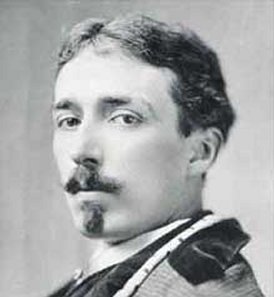
James Carroll Beckwith was an American landscape, portrait and genre painter whose Naturalist style led to his recognition in the late nineteenth and very early twentieth century as a respected figure in American art.

Kenyon Cox was an American painter, illustrator, muralist, writer, and teacher. Cox was an influential and important early instructor at the Art Students League of New York. He was the designer of the League's logo, whose motto is Nulla Dies Sine Linea or No Day Without a Line.

Nathan Isaevich Altman was a Russian and Soviet avant-garde artist, Cubist painter, stage designer and book illustrator.
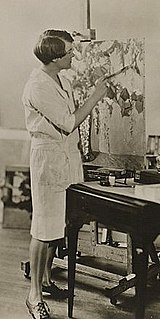
Jane Peterson (1876–1965) was a graduate of Pratt Institute and an American Impressionist and Expressionist painter. Her works are created in Impressionist and Expressionist styles using broad swaths of vibrant colors to combine an interest in light and in depiction of spontaneous moments and are well known for vivid, rich painted still life, beach scenes along the Massachusetts coast. Her works are housed in museums such as the Metropolitan Museum of Art, the Museum of the City of New York, the National Museum of Women in the Arts and Hirshhorn Museum in Washington D.C, and Pennsylvania Academy of Fine Arts and Philadelphia Museum of Arts in Philadelphia, Pennsylvania.

John Ottis Adams was an American impressionist painter and art educator who is best known as a member of the Hoosier Group of Indiana landscape painters, along with William Forsyth, Richard B. Gruelle, Otto Stark, and T. C. Steele. In addition, Adams was among a group that formed the Society of Western Artists in 1896, and served as the organization's president in 1908 and 1909.
Eda Nemoede Casterton was an American painter known specifically for her portrait miniatures in watercolor, pastels and oil. She exhibited works at the Paris Salon and the San Francisco Panama–Pacific International Exposition of 1915, among others. Her works are at the Smithsonian American Art Museum and the Brooklyn Museum.
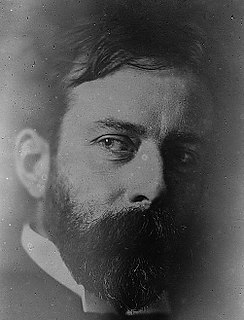
The Eagle's Nest Art Colony, the site known in more modern times as the Lorado Taft Field Campus, was founded in 1898 by American sculptor Lorado Taft on the bluffs flanking the east bank of the Rock River, overlooking Oregon, Illinois. The colony was populated by Chicago artists, all members of the Chicago Art Institute or the University of Chicago art department, who gathered in Ogle County to escape the summer heat of Chicago. The colony complex has been used as a field campus for Northern Illinois University since 66 acres (27 ha) of Lowden State Park were turned over to the university by the state of Illinois.
SisterMaria Stanisia, S.S.N.D., was an American Catholic nun, artist, and painter, member of the School Sisters of Notre Dame.

Catherine Elizabeth Macready Perugini was an English painter of the Victorian era and the daughter of Catherine Dickens and Charles Dickens.
Wellington Jarard Reynolds was a well-known Chicago portrait painter and art instructor at the Art Institute of Chicago. Educated in Chicago, Munich, and Paris, he was awarded medals for his work at the Paris Salon as well as in juried exhibitions in the United States.

Louis Dubois (1830–1880) was a Belgian painter who specialized in landscapes and Portraits in a naturalistic style. He also painted genre and still-life subjects.

Oliver Dennett Grover, was an American landscape and mural painter, the son of lawyer Alonzo Jackson Grover.
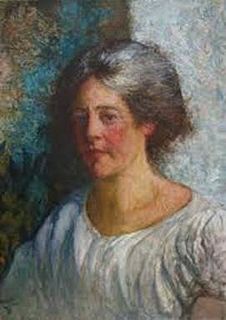
Emma Chadwick, née Emma Hilma Amalia Löwstädt, was a Swedish painter who specialized in genre scenes and portraits.
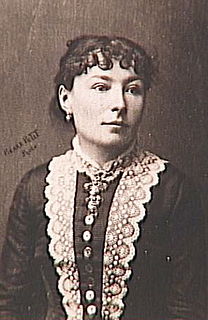
Virginie Élodie Marie Thérèse Demont-Breton was a French painter.
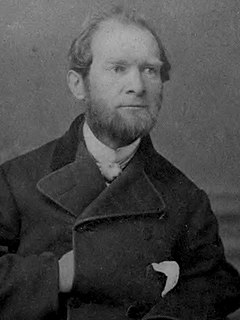
Thomas Barbour Bryan was an American businessman, lawyer, and politician.
| Wikimedia Commons has media related to Ralph Elmer Clarkson . |